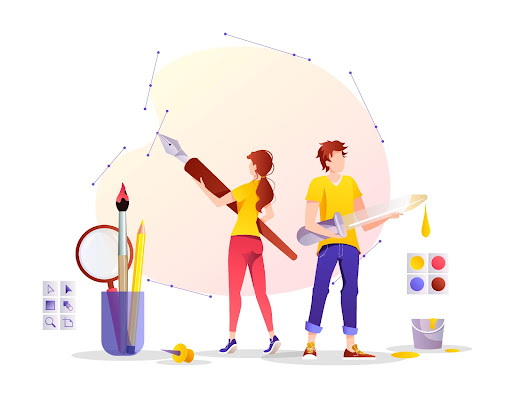
The Parallel Evolution of Design & Technology
November 14, 2023 - Jared Fetters

November 14, 2023 - Jared Fetters
Like every aspect of life, technology has its influences. Graphic design and branding are no different. Throughout history, new technology has inspired and shaped the evolution of design trends. We have highlighted a few of the many technological advancements that have influenced graphic design trends from branding, to typography, to interactive design.
The origin of typography can be traced back to ancient hieroglyphs. Where the first human civilizations used symbols as forms of communication. However, one of the largest influences technology had on typography was in the 1400’s when German inventor, Johannes Gutenberg, created the first movable-type printing press. At a time when books and information had to be meticulously handwritten, The Gutenberg press allowed for communication and information to be mass-produced. This invention fostered sociological movements throughout Europe at a rapid rate such as the Protestant Reformation, the Renaissance Period, and the Industrial Revolution.
Not only did the Gutenberg press lead to a massive spread of information, but it also created the need for the world’s first typeface; Blackletter (more specifically, Gutenberg Textura). The Blackletter typeface was used in the mass-produced Gutenberg Bible. It was modeled with two key factors: adapting scribal handwriting traditions that came before mechanized type and space optimization. Variations of Blackletter typefaces were used for centuries in printing and were the basis of new generations of typography to come.
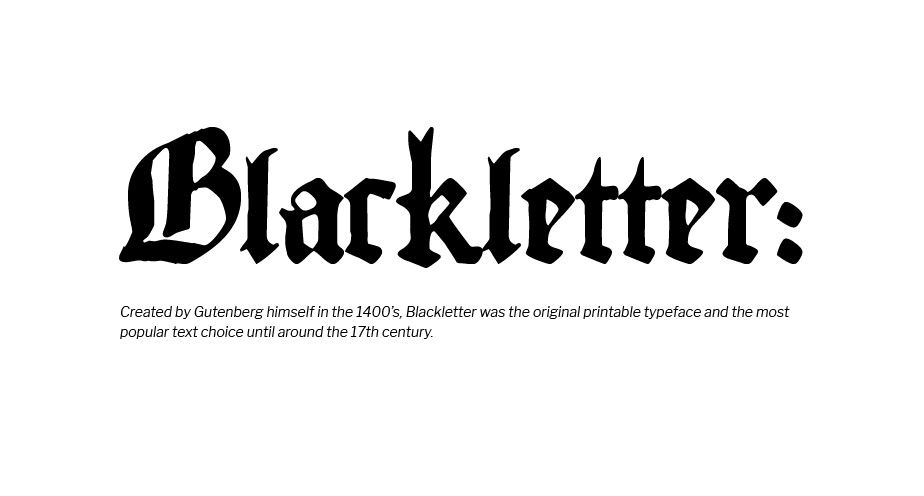
With the explosion of printed text throughout the world, the need for better legibility and stronger layouts arose in the print world. This need led to a movement of Humanist, or Old-Style fonts like Caslon and Jenson. Though still an early form of typography, the traits and characteristics of modern-day type are prevalent with its recognizable serifs and lighter contrast compared to its Blackletter predecessor. Eventually, some of the same influences led to the creation of Slab Serifs, a heavier and bold bracketed serif with little to no contrast. However, this 1800s type did not withstand the advancements in mechanical and industrial printing processes.
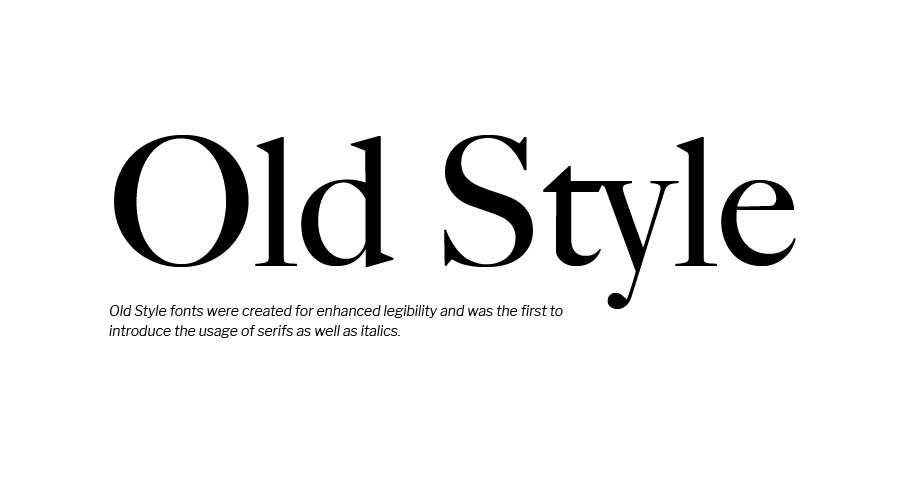
Monospaced fonts were invented to suit the mechanical requirements of typewriters during the 1860s. Unlike traditional fonts, monospaced fonts are non-proportional – meaning every letter takes up the same amount of horizontal space. This makes Monospaced fonts more difficult to read due to their lack of contrast in width. However, what they lack in legibility, they make up for in pacing and consistency. Modern-day uses for monospace fonts vary from poetry and reading music for pacing, to script writing used to judge the length of different screenplays.
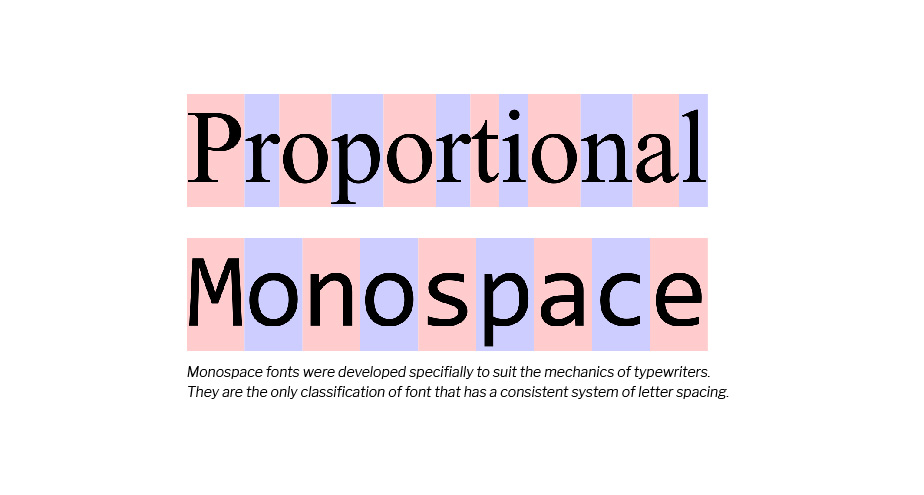
During the Second Industrial Revolution in the late 19th century, as more inventions were created and companies were founded, the need for company brands arose. The boom of industries and new businesses led to a need for differentiation. How does one separate a brand of soap from another? Marketing of course! This led to the popularization of variation in fonts such as using bolds and italics, extended and condensed fonts, and major weight variation being used in advertising on posters or billboards.
As the digital age arose, sans-serif fonts were heavily reintroduced as a pure simplification of typography. This font type relied on shapes and usability at different sizes to be mass-produced in both print and digital form. Sans-serif fonts were adopted to live in the new digital world by keeping simplicity and resolution in mind. They keep their legibility across various screen devices big and small, emerging as the most popular choice of fonts for the digital age.
When we look back on the evolutions of brands and how companies have marketed themselves, there is no doubt design trends come and go. Established companies with a long history of branding, like Coca-Cola, Apple, and Nike, have all gone through the perils of updating their logo to modernize them for their current time period. The problem is of course that time goes on and eventually, a logo or brand will be outdated again. Some of the biggest influences of a brand becoming outdated come from the advancements in technology.
Branding and self-imagery as a concept can date back to 8,000 BC when Egyptians would use illustrations and paintings for their personal branding. However, the commercialized branding that we think of today didn’t hit its stride until the turn of the 20th century when companies began selling their “mark” as much as their products. Brands like Pepsi, Ford, and AT&T have all had a similar logo journey starting from a hand-crafted and unique logo, to the modern flat simple brands that we see today.
These distinct changes in brands and logos can be attributed to the technology at the time as to why certain artistic choices were made. In the late 1800s, brands were just developing and personalizing. Most companies wanted their mark to stand out significantly but were limited to the physical craftsmanship of the artists, so logos were often handwritten or complex pieces of art. Fast forward to the late 1990s and early 2000s, there was a major breakthrough in design with the development of computers and their ability to create digital effects on logos such as drop shadows, strokes, and vibrant colors. This is a very apparent change in logos that spans across all markets in the United States during the 90’s.
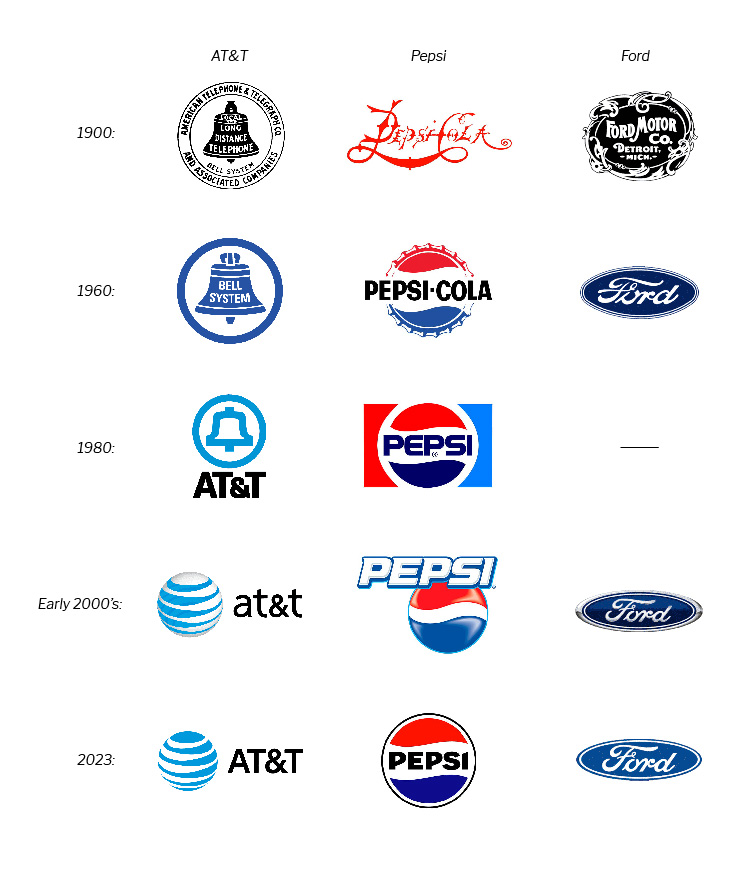
The trend of PowerPoint and Microsoft Paint effects on logos quickly trailed off as a need for variety across different mediums became more prevalent. Logos were no longer only on the product or a business card. Not only do modern logos appear on a wide spectrum of material sizes from billboards to golf balls, but the entire essence of the company needs to be captured in a 1” x 1” app icon. No longer can the craftsmanship and personalized logos be effective at such small levels, they need to be simple with no wasted detail, likely with a scalable icon.
Marketing design as a whole has become more simplified due to the need for mass production and omnipotence across various dimensional platforms. This is so brands can be applied more effectively in the modern age. Going back to the Pepsi example, the original logo was used for advertisements and bottle printing. Since then, the spectrum of mediums you can find within the Pepsi brand has vastly increased due to the development of technology and the opportunity to showcase a brand in different ways. Pepsi has gone from bottle cap prints to a 1999 Pepsiman PlayStation Game, to a recent 2022 Pepsico Interactive Exhibit. A brand must adapt and evolve to sustain effectiveness across such a wide range of mediums. Even within their mediums, there are ways to vary a brand to showcase it in a creative but systematic way.
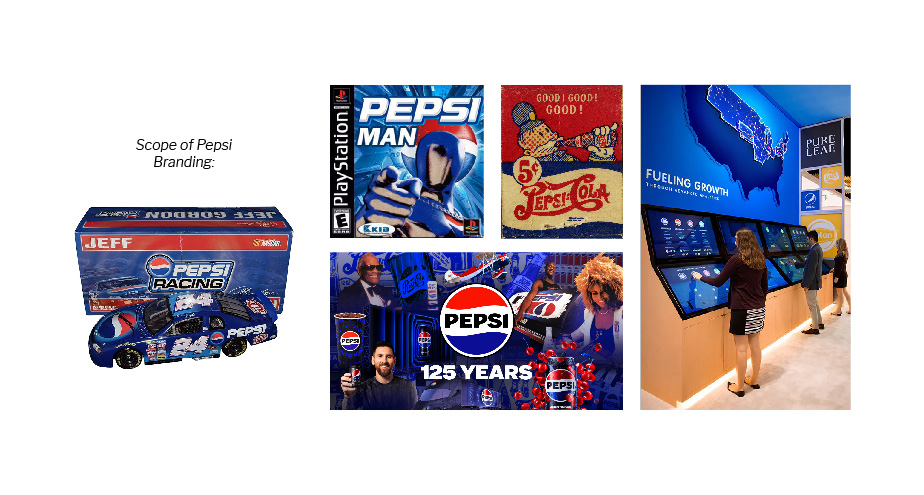
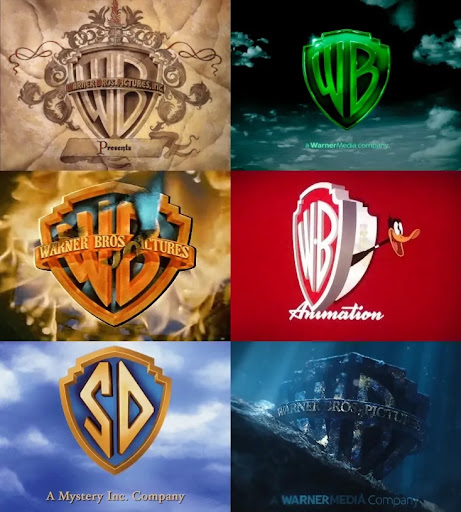
Another reason for the simplification of branding and logos is simply the sheer ability of massive recognizable brands, that can get rid of all unnecessary details, even the company name itself. Companies Nike and Starbucks don’t have their name in their logo anymore – they use only the swoosh and the mermaid. Currently, if you go to the Starbucks homepage you won’t even see the word Starbucks written out until you get to the very bottom of the page where it’s in the copyright info. Ad examples like Starbucks’ Fall 2023 commercial and Nike’s Find Your Greatness commercial don’t even mention the respective brand name but the subtle branding woven into the commercial informs the audience of whose ad this is. Companies now have the capability to utilize an image, an icon, a sound, or even a feeling, as part of their brand, they don’t even need the name.
Logos and marketing design will always continue to evolve – trends will come and go but no matter where technology development takes us, brands will adapt. Designers and marketers need to embrace change and evolve as well. Look for new opportunities to showcase your brand; How can it be used in a new space? How will artificial intelligence and virtual reality influence how we see brands?, etc. They will certainly provide new challenges and opportunities for design to solve.
Whether you’re looking to establish a new brand identity or refresh your existing brand, we’ve got the solution for that. Connect with the Solution design team today to find out how you can upgrade your brand.